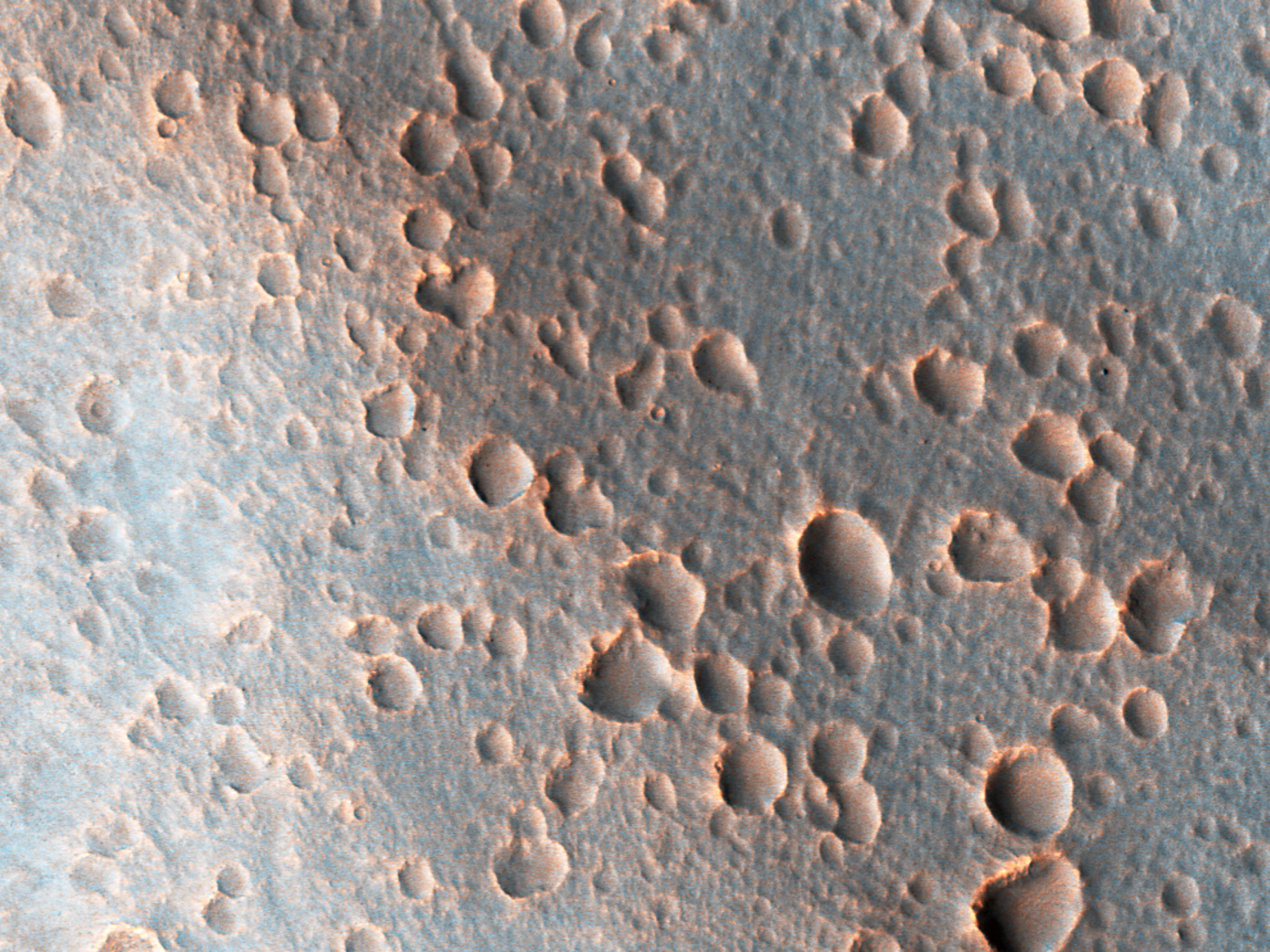In this view we can see a section of a crater wall, and surrounding terrain,
littered with small impact craters. Generally, the impact crater density (the number of impact craters in given surface area) is a good indication of how old a particular terrain is. The more craters we see, the older it is.
However, we need to ensure that the craters are “primary” craters. That is, they are caused by the direct impact of a bolide coming from space. Impact events eject materials off the surface, and under certain conditions, these ejecta may fall back to the surface with enough energy to create a string of “secondary” craters that are in proximity and radiate from the primary one, but are much smaller in size.
If scientists mistake those craters for primary ones, their assessment of the surface age will inaccurate. So how can we identify secondary craters? As we can see in this image, there are groups of small impact craters of similar size clustered together. This is one of the most telltale signs that they are secondary craters. These secondaries are sourced from a primary fresh-looking impact crater, Noord,
just to south-east of this image. The fact that we can see many of these secondaries, and they appear to be in pristine state further suggests that their main impact crater is also relatively recent, and this can allow us to better understand impact dynamics on Mars.
ID:
ESP_083133_1615date: 21 April 2024
altitude: 261 km
https://uahirise.org/hipod/ESP_083133_1615
NASA/JPL-Caltech/University of Arizona
#Mars #science #NASA
